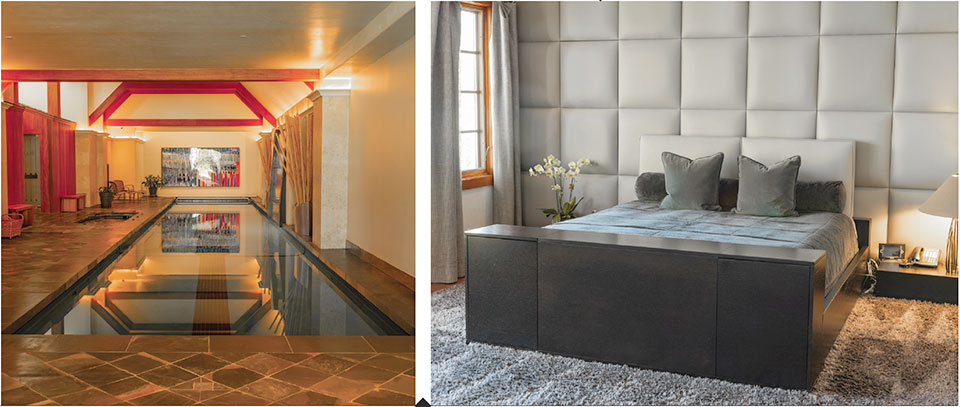Park City’s Realtors Share
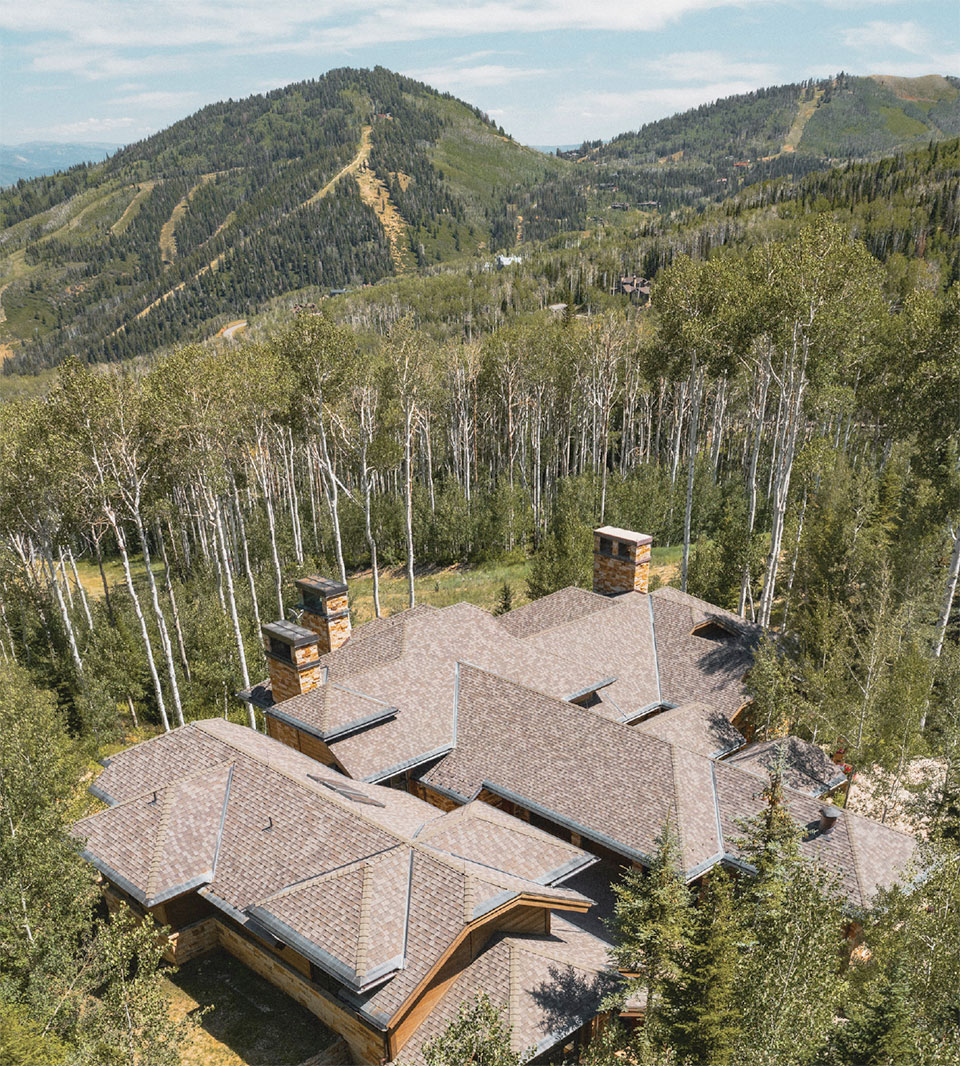
One of the many reasons to enjoy Western Home Journal is for its anticipated Real Estate Roundtable discussions, which provide insightful inside information on the state of things in the Park City real estate market. For the 2019 Winter/Spring Park City edition, we gathered some of the top realtors in the area, including Bronson Calder of The Colony at White Pine Canyon, with Berkshire Hathaway HomeServices, Marcus Wood of Engel & Volkers, and Marcie Davis of Sotheby’s Park City, to offer knowledge, advice, and tips for navigating the booming Park City real estate market. They all agree that the market is strong and steady in every segment of the real estate arena, as inventory, at every price level, is competitive. The area continues to attract homebuyers who want to live in Park City not only in the winter, but year-round.
Park City continues to thrive and is handily maintaining its place as one of the top mountain town living destinations for first and second homeowners, especially as consistent municipal improvements to the area make it even more attractive. Read on to learn more about what’s so good about Park City living.
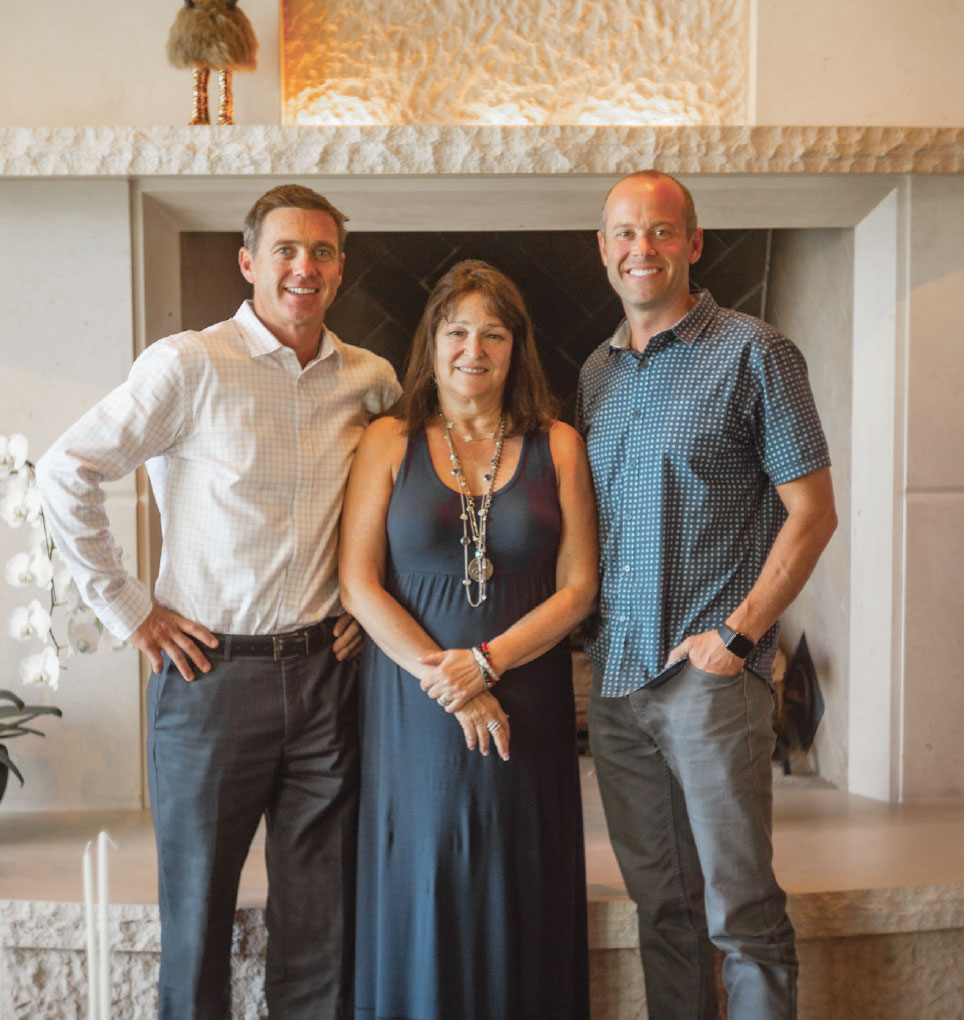
whj : What are some of the main economic drivers in today’s Park City real estate market?
Bronson Calder: Park City has become a world-class, year-round destination. We’re now on the map and play on the same level as some other destinations such as Sun Valley, Jackson Hole, Vail, and other resorts.
Our accessibility is key, with Salt Lake City International Airport only 30 minutes away. We also have marketing machines like Vail, St. Regis, Montage, and Waldorf Astoria driving new people to Park City. The economy in Utah is one of the best in the country, and it offers endless opportunities for people who want to be here full time.
whj : How do people find out about Park City residences such as the Waldorf Astoria?
BC: They have a clientele that is very loyal to those brands. Having destinations here opens the door to all those loyalists to come to Park City. We saw this with the St. Regis when it came into town. It’s a brand loyalty and following. These companies—Vail and St. Regis—have huge marketing reach, and they are pushing these properties out through their social media platforms and print advertising. People see this and want to try Park City, and then, they see how easy it is to get here; it’s beautiful and it’s fun.
For so long Park City had a stigma that you can’t get a drink here, it’s a bunch of weird people, and it’s ugly. I was born and raised here, and I have seen the evolution of Park City come together. It really has changed. It’s a hot market, and there’s a lot of buzz about Park City. It used to be that the ‘cool’ places to go were Aspen and Vail. Park City is now one of those locations, and it really has changed the dynamics.
Marcie Davis: I have lived in town for 20 years and saw a distinct change once the Waldorf Astoria, Hilton’s first ski property, came to town. This change continued with the arrival of Vail Associates. These companies brought people to Park City who previously only thought of western skiing in Colorado. I have had numerous conversations with people who have told me that they only came because they had an Epic Pass and now they see the advantages of Park City. Once they get here, they see how easy it is to arrive from the airport, a mere 30-minute ride, with virtually no traffic and typically no poor weather conditions to get up the hill. In 2017, Alterra Mountain Company, owner of Aspen Mountain, Stratton, Mammoth, and several others, purchased Deer Valley. We are now a company town, not the sleepy local place we were before these behemoths showed up. Our purchase prices are considerably less than Vail, Aspen, and Telluride, to name a few, and therefore we appear to be the great value.
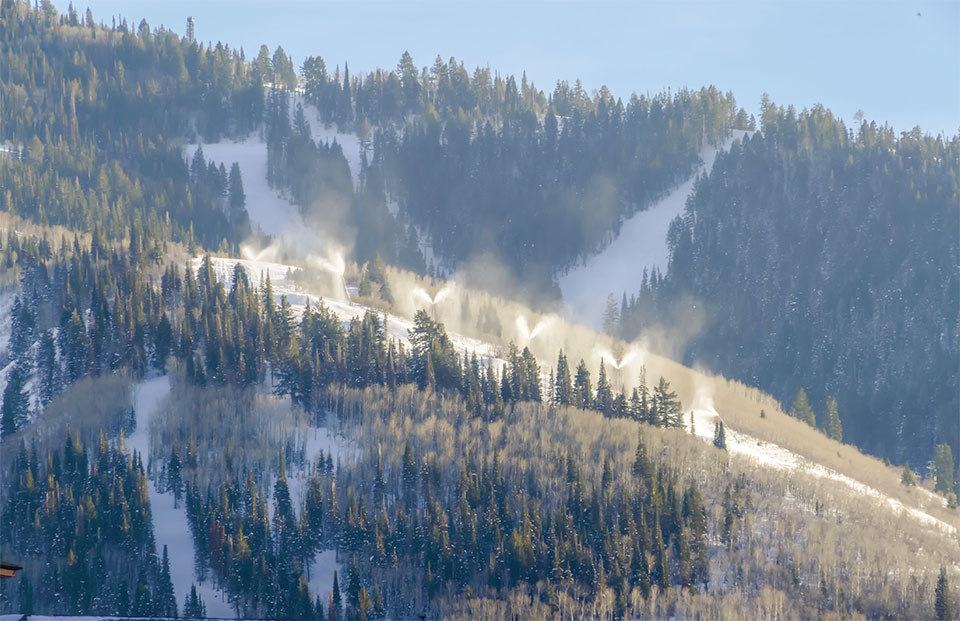
whj : Will Alterra change Deer Valley?
MD: It’s already changed Deer Valley. They used to cap skiers at 5,000 or 5,900 tops, and this year they went up to 9,000. People were brown-bagging lunch.
Marcus Wood: The Ikon Pass has made a big impact. A handful of people have commented that the Ikon Pass has made it more challenging, in terms of the amount of skiers on the mountain all at once. The flipside of this is that it really put us on the map. The most important thing is accessibility. Everyone is spending money, skiing, shopping, dining, and all going home and telling their friends about it. Now, you’re on the map. In addition, Ski Utah has spent a ton of money advertising our resorts. You cannot open a magazine on the airplane or airport and not see an advertisement from Ski Utah. They have done a great job.
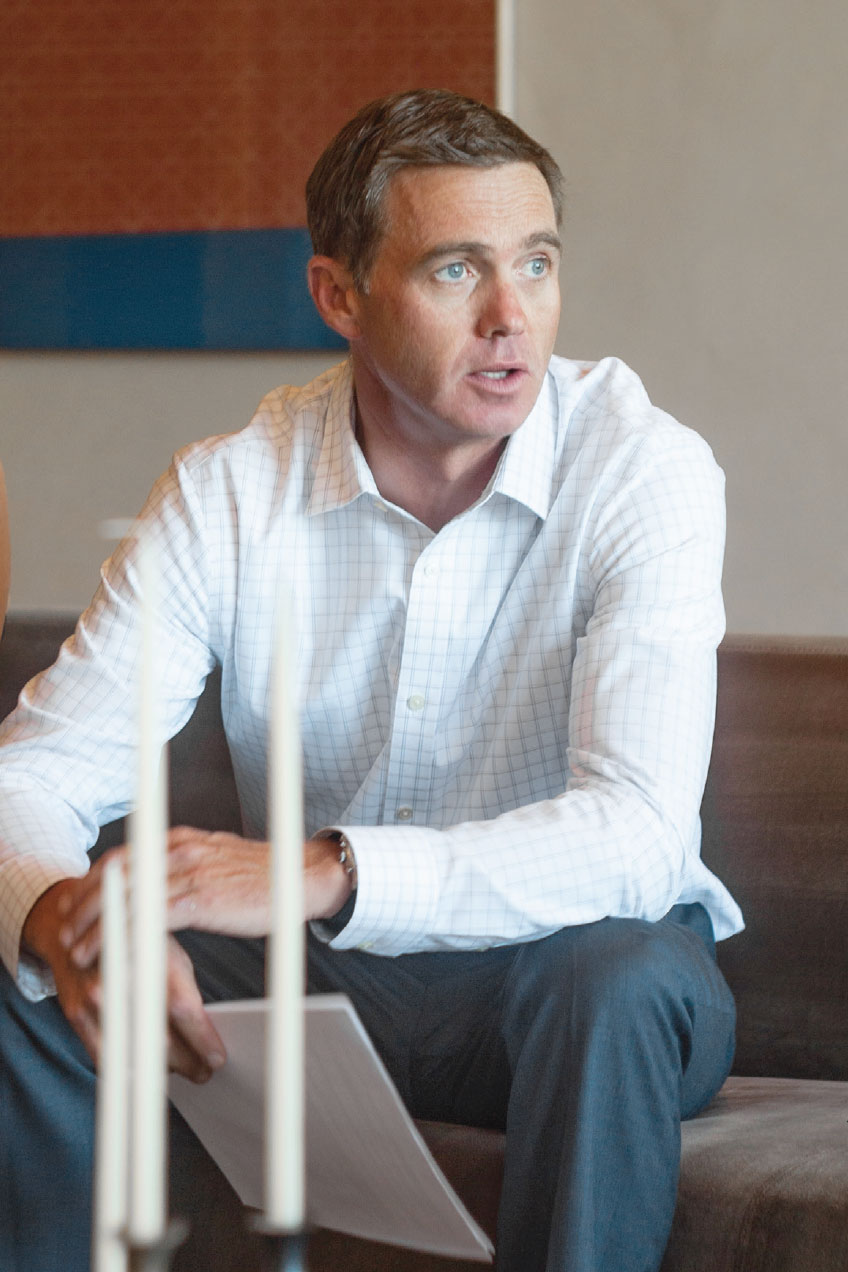
“There’s a real sense of community here. Many of the other resort towns get very transitory where there’s not a true community. Park City has really embraced that and figuring out a way to keep the locals here and keep them involved. It gives second homeowners a better sense of home when they come here.”
––Bronson Calder, Berkshire Hathaway HomeServices
whj : What about the Salt Lake City airport?
MW: It’s a huge expansion with over four million additional square feet costing $3.9 billion. They plan to roll out phases over the next three years. The economic impact will be big for our local economy, including access to Park City from other destinations around the U.S.
MD: It will be the first new airport built since 9/11. It’s the latest and greatest. Once people realize how easy it is to get here, then going back to Vail and Aspen and those places in Colorado is just really difficult.
MW: Every year you hear this.
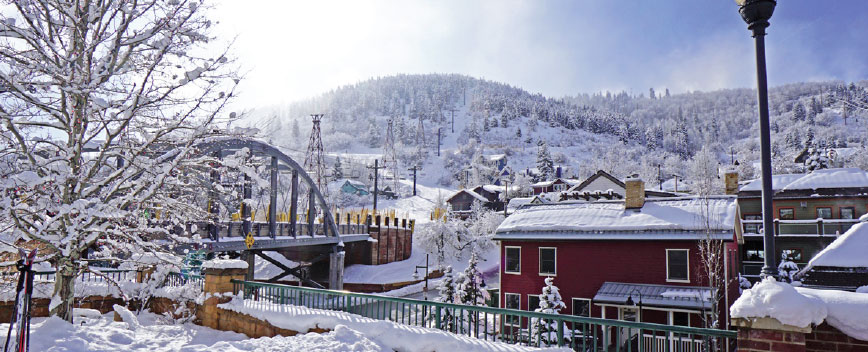
whj : What about summer in Park City?
MW: The local economics have changed. We are definitely a four-season town. Recently, we just hosted the Tour of Utah, which brought over 10,000 people and cycling teams from all over the world. In addition, we have wine and arts festivals as well as open-air dining events. Just to name a few. We have soccer and baseball tournaments, which have put us on the map for summertime, making us a true four-season destination.
MD: The saying is that they came for the winter but stayed for the summer.
BC: In the summertime, we really appeal to those in warmer clients such as Vegas, Arizona, Texas, and Florida, where we have a huge influx of second-home buyers who purchase here and have no interest in wintertime activities. It’s a complete summertime purchase. The climate here is spectacular in the summer. We have seen lots of buyers, especially from Texas where the economy is doing really well.
MW: Stein, St. Regis, and The Montage are mostly booked all summer long. In a few years, our summer business will equal our winter business. Park City, as a town, has invested huge amounts of money into making it a year-round destination. We’re lucky with our world-class-ranked trails and abundant activities that they have made available. This has been a real game-changer for us.
MD: We have many activities, one being the fastpitch women’s softball tournament. Every Monday they have a parade down Main Street. The town really goes out of its way to build that summer business.
MW: The town has figured it out. We have had enough functions every year that they have figured out how to manage the flow, the traffic, the cars, the buses, the foot traffic, hotels, and restaurants.
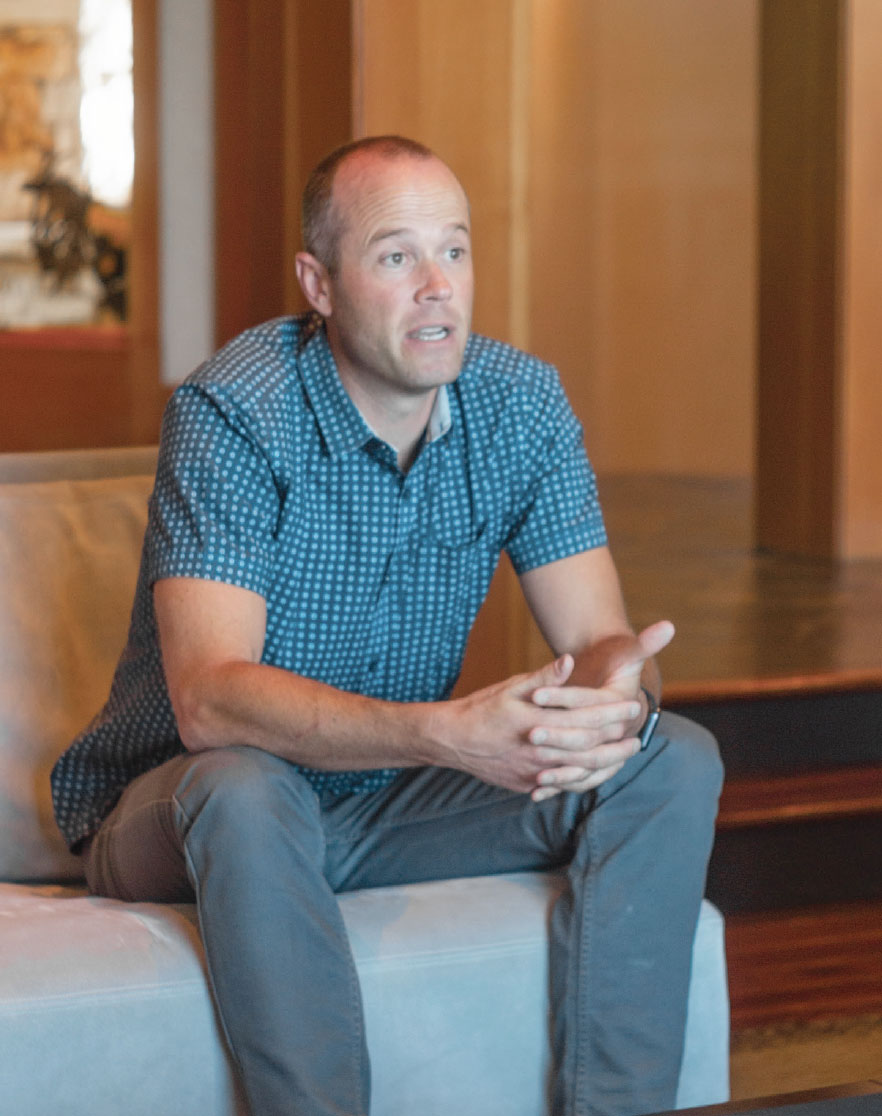
“We have buyers year-round. People purchase properties here in Park City based on their lifestyles, whether they like golfing, fly fishing, skiing, or anything in between.”
––Marcus Wood, Engel & Volkers
whj : What was the largest sale to date in 2019?
BC: A large disclosed sale was 7715 North Bald Eagle Drive. It was listed for $9.4 million and closed for $8.9 million. We had a couple of undisclosed sales including 174 White Pine Canyon Drive, which sold in March of 2019. It was an undisclosed price, but it was listed for $12,955,000. In Marcie’s office, Sotheby’s Park City, a home listed in Deer Crest, 9828 North Summit Drive was listed for $25 million and is currently under contract.
MW: It is uncommon to reach $10 million for a home sale in our market. This year, we have breached that with several sales in excess of $10 million dollars.
MD: This $25 million house is about three years old, at the top of the mountain at Deer Crest. It’s a ski-in and ski-out beauty that took three years to build. It’s just spectacular.
MW: Just recently myself and my partner Paul sold a property for $32.5 million. To our knowledge this is the highest ever residential sale in the state of Utah. The 16,800 square-foot home was situated along the Weber River and was surrounded by 2,670 acres.
BC: There are a couple of big whales under contract right now.
whj : Does the Salt Lake community have a role in this market?
MD: Salt Lake is our biggest feeder market. In talking about the stats in regards to our economy, Utah is number one in just about every stat you can come up with. Our unemployment is the lowest and our economy is booming and is quite diverse. We are now home to the Silicone Slopes and also have a lot of other industries. We export a great deal of solar energy. Additionally, Park City has top-notch schools and the ratio in Park City is one teacher to 16 students. It’s one of the best school districts in Utah.
BC: Our philanthropy is off the charts, and we have the Park City Education Foundation, which is unbelievable. All the dollars raised by the Education Foundation do stay within Park City School District, which is consistently listed among the best in the entire state of Utah. It’s a huge endowment.
MD: We have over 100 non-profits in Park City. It’s a good way for non-locals to become locals.
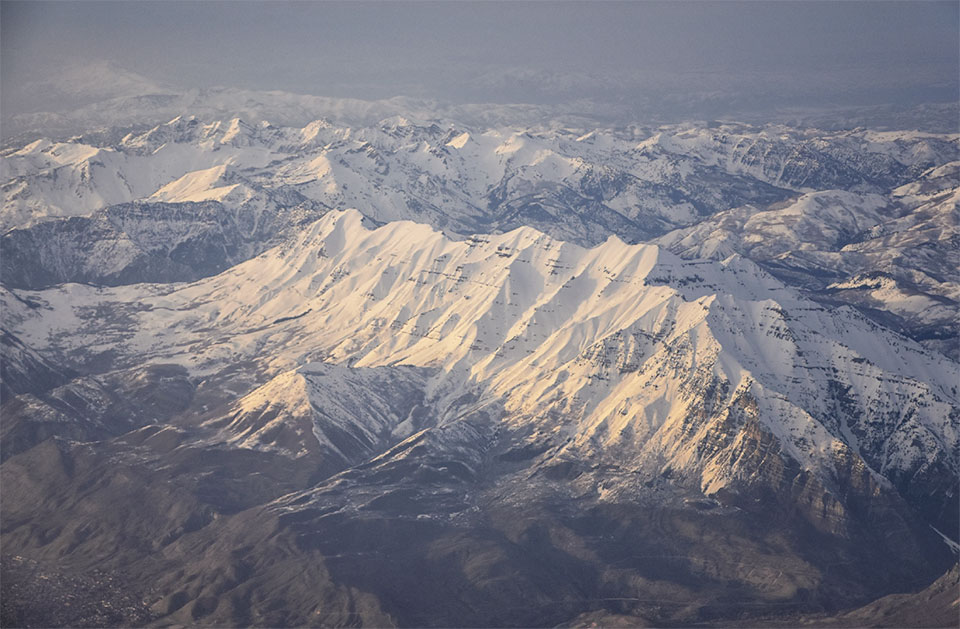
whj : How is the inventory for older homes? Are they being sold for remodeling or teardowns?
MD: We do not have enough good inventory. Good inventory consists of good floor plans and updated finishes as well as enough family space.
BC: There’s not a big desire for primary or second homes for people to start a big project. Contractors are busy and that process can be so painful. Having something turnkey and ready to go is going to sell much better in our market. There is usually a compelling reason, mainly the price, to buy some of our older inventory. We have a lot of inventory that’s in that 20- to 25-year-old range.
MW: Styles have changed too.
BC: There seems to be more of a demand for the mountain modern look—clean lines and easy. Here in The Colony, people still want natural elements of stone and wood, but not the ‘Smokey the Bear’ big round logs.
MD: People are coming to the mountains to be in the mountains.
MW: It is a personal preference. Some people want logs and some want concrete. But the bigger take is that people do not want to take on a big remodel project. They have the money now, they want to make the memories now, they want to enjoy it now, and they don’t want to spend a year or two waiting. In some cases, they are actually willing to pay a premium for what they want, which is new or remodeled.
whj : What do people want in the million-dollar home and above?
MD: Kitchens and bathrooms sell houses. At the Sotheby’s website, sir.com, you can search by kitchens and bathrooms. They have done their research, and they have found that’s what sells houses. The view is important and those houses with immediate views, especially for second-home buyers, sell immediately. The full-time buyer doesn’t care because they walk out and are in the view every day.
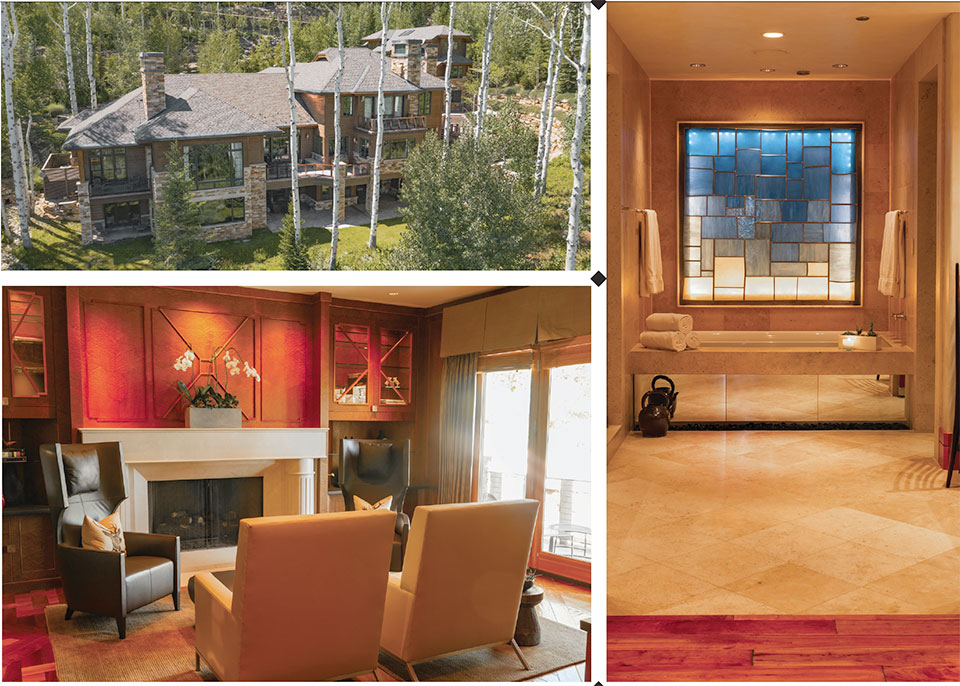
whj : How is year-round living in Park City changing the real estate market?
BC: No question it is. Going back years ago, the real estate market and the whole community shut down in the off-season. Restaurants and stores were closed, but now it’s all full-time. People have access to products and information all year. Our market is a lot less seasonal.
MD: My husband owns Java Cow on Main Street. He closes one day a year, which is Thanksgiving. People ask if there is a better time to purchase than others, such as during shoulder season. While that used to be the case, these days there really isn’t a better time to buy, but it is noteworthy that during the busy times of Christmas Week, President’s Week, and the Sundance Film Festival, it is often difficult to view properties since they are usually rented out.
MW: We have a great year-round community. In addition, buyers are buying during all seasons. There really is no true ‘selling season’ anymore.
BC: They are here to ski in the winter. We call them the b-backs. They will come back for a real estate trip.
whj : Can you describe your typical buyer?
MW: We have buyers year-round. People purchase properties here in Park City based on their lifestyles, whether they like golfing, fly fishing, skiing, or anything in between.
BC: And fly fishing is huge. Every buyer has a different desire and need. In Park City, there are so many different moving parts, rules, regulations, and amenities. They need help, and we are happy to act as guides. It’s really important because it’s so hard to navigate the market independently. Ninety percent of homes sold in Park City are done through a real estate agent. In a resort town, buyers and sellers need a real estate agent to act as a guide and as an advocate.
MD: My typical buyer varies from a full-time residence for a family to a second-home ski property that will generate some income. We are unique in the resort market in that we are a ski resort and a golfing/fishing destination as well as a bedroom community for Salt Lake City and the surrounding areas in the Valley.
MW: People ask us, ‘Where are the closest trails?’ We have over 450 miles of trails locally. Boating has become very popular. People are out at The Jordanelle all the time, and there are white sandy beaches and shores. It’s probably the most popular state park in Utah. It’s another component of our year-round lifestyle.
BC: We have five lakes all within 20 minutes, and with the expansion of The Jordanelle to Deer Valley, you can have all-season activities. It’s like going to the beach in California.
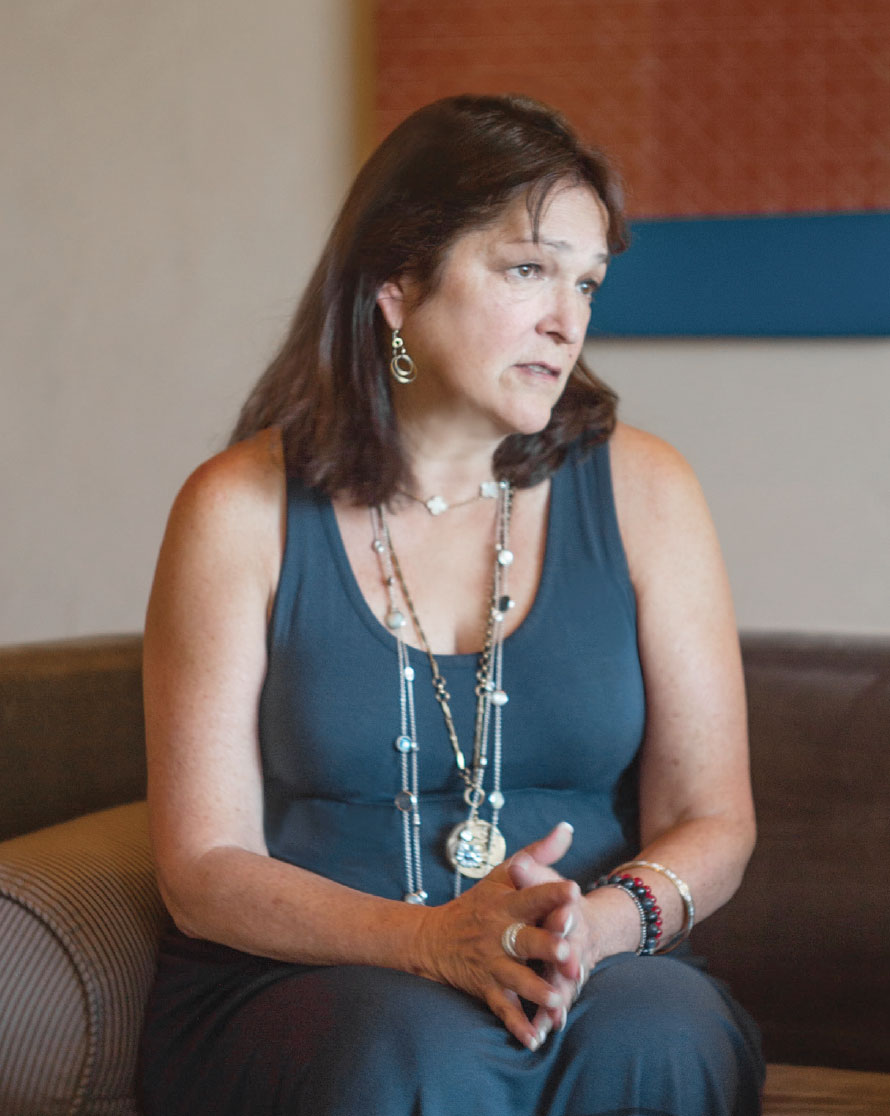
“My typical buyer varies from someone looking for a full-time residence to a second-home ski property that will generate some income. We are unique in the resort market in that we are a ski resort and a golfing/fishing destination as well as a bedroom community for Salt Lake City and the surrounding areas in the Valley.”
–Marcie Davis, Summit Sotheby’s International Realty
whj : Park City continues to boom as a major mountain town real estate market. Describe the state of things—how has it changed?
BC: A lot of the new inventory is the condominium world. We have a number of large condominium projects. Replay, which is a large master plan development group that did Whistler and Vail, have come in with a whole new master plan for the redesign of The Canyons Village. We have seen six new large development projects come in.
MW: People comment that there’s a lot of building going on, but it’s really in The Canyons Village area. Most of Park City has been built out. Most of the growth is being pushed out to The Jordanelle area on the outskirts of Park City where we have land to build on.
MD: We are seeing a lot of communities popping up along the 248 corridor with much lower price points than in Park City. You can purchase a condo/townhome-type property starting in the mid $400,000-$500,000 range for new and newer construction. To be in that price range in Park City, you would probably have to do a considerable amount of renovation. The Jordanelle Parkway is under construction, which will link this area with Exit 8 on Route 40, a hop, skip, and a jump to one of the entrances to Deer Valley Resort and to all the new development on the Mayflower side of Route 40. This will have a huge impact on sales of these units.
BC: The whole Mayflower component will be right at the base of a brand-new world-class village. Wasatch County is the fastest growing county in Utah and the fourth fastest growing county in the country. Park City will service this as opposed to Heber City. There’s a lot of building going on in the gated communities such as Promontory and Victory Ranch, which has taken off. It’s unbelievable. It’s more the outdoorsman’s club with hunting, shooting, backcountry yurts, and fishing.
MW: Most of these places are really driven purely by lifestyle, not necessarily real estate. We have a product for everyone, and we point them to the right neighborhood.
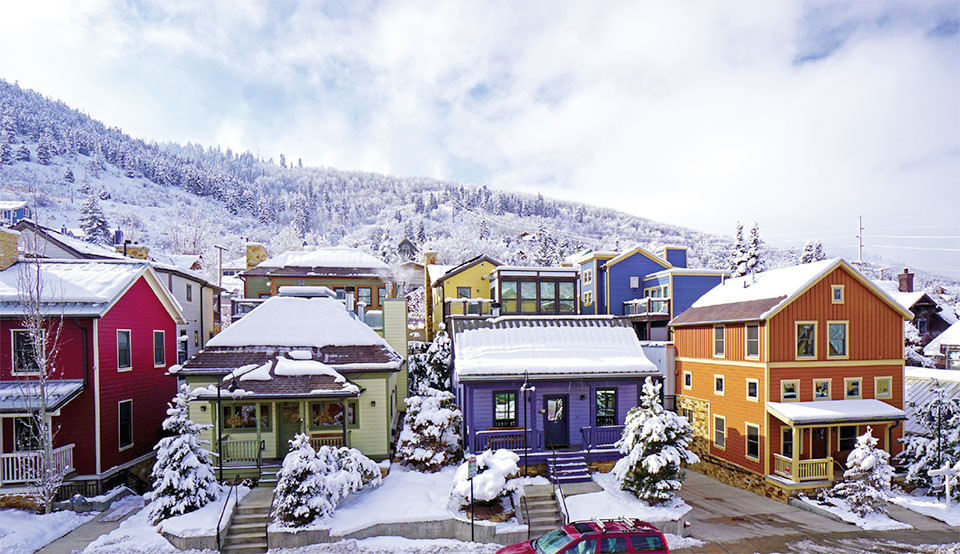
whj : What is the most popular construction in the Park City market today?
BC: The one single design that’s in demand is mountain modern. It is cleaner lines and lots of wood, natural stone, and marble. We do see a great deal of old barn wood used in a clean way. Not big chunky stones and round logs.
MW: People want the exterior elements of a home to flow with the interior so the floor-to-ceiling glass and big windows bring the outside in—clean and simple.
MD: There’s also a big push for the outside space, which adds to the living space. People love spending time outside due to our exceptional weather. We are seeing a lot of outdoor kitchens, pizza ovens, and such being built today.
MW: It’s part of how people live in Park City. There’s a huge push to live outside.
BC: On the construction side of things, we have seen changes from the old 2×4 and all-wood construction. Now, we have world-class architects from all over the place. You used to be able to build in Park City for $200 to $300 per square foot and now they are spending up to $2,000 per square foot. People are looking at sustainability and the green side of things. There are no longer wood-burning fireplaces so there are a lot of changes. The efficiencies with heating and air conditioning systems are amazing, which is important because people want to maintain what we have.
whj : What type of buyers are you working with in the Park City market?
MD: Many people start out just wanting a second home. But we have seen many people spend time here in the summer and then change their plans. Suddenly, they are ready to move here full-time. It’s how I came here. My agent warned me, and I just laughed, but look who is laughing now!
MW: Many people have a dream and aspiration of living in a mountain town, and I think we have transformed away from being a typical ski town. Now, we have top-notch golf communities with neighbors like Promontory where they created their own city. Promontory is as large as Park City. We have something for everybody from the ski bum condo, the über-high-end home up in The Colony you can ski in and out of, and golf communities.
MD: We are also a bedroom community to Salt Lake City and the surrounding valley so we are not just a ski town. This means that we work with many more full-time residents than most other ski towns. This feels like a real place rather than a Disneyland for adults. Additionally, Old Town Park City is on the National Historic Register, which is ‘cool’ to many people who are looking for something unique.
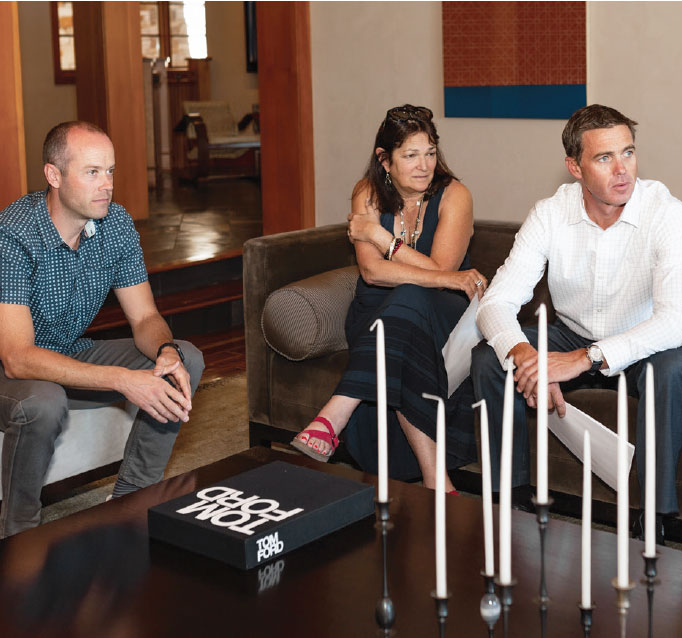
MW: Those attractions will suck people in, whether it’s cycling, the arts festival, wine festival, baseball, or softball. There’s a product for everybody to fit their budget and lifestyle.
BC: There’s a real sense of community here. Many of the other resort towns get very transitory where there’s not a true community. Park City has really embraced that and figured out a way to keep the locals here and keep them involved. It gives second-home owners a better sense of home when they come here.
BC: We don’t talk about the climate enough, and we’re lucky in Park City to have the climate that we have. We get 300 days of sunshine, and the altitude is manageable.
MW: And some of the winter sports continue to grow. Fat tire mountain biking has become huge in this town. Trails are groomed so you can ride a mountain bike the middle of winter. Nordic skiing has more and more kilometers being groomed every winter, and it continues to grow. Downhill continues to do its thing, and we have had an announcement for a new resort near Deer Valley.
BC: For families where everyone is not a skier, we have so many different options for people from tubing hills to the winter park where you can zip-line and ride rollercoasters as well as visit museums and enjoy fine dining.
MW: You can be a non-skier and stay very busy doing other activities all winter in Park City.
